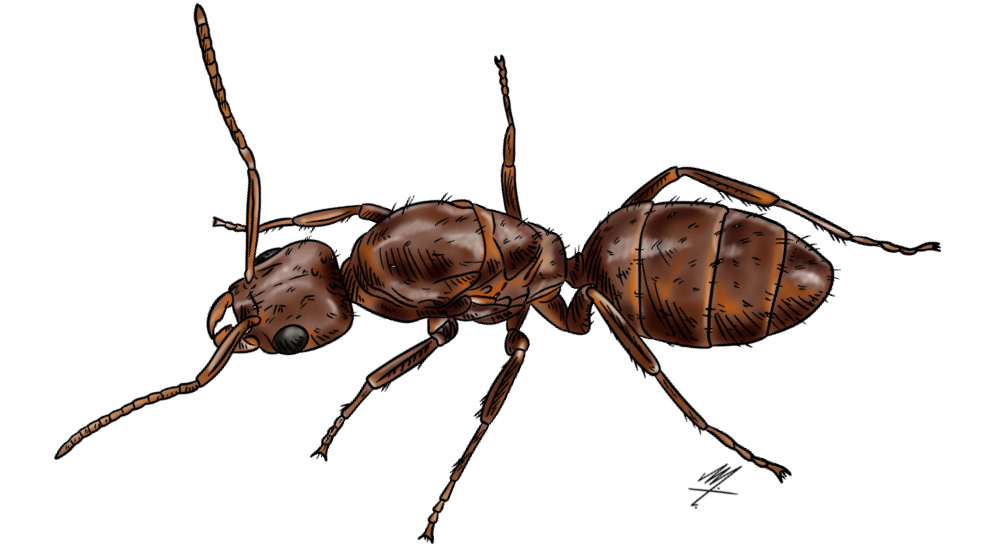Unveiling the World of Argentine Ants
Picture a tiny ant with a big sense of adventure. That’s the Argentine Ant! These little creatures have traveled far and wide, making homes in new places and showing us just how adaptable nature can be. Join us as we journey into the life of the Argentine Ant and learn about their amazing abilities and challenges.
Spotting an Argentine Ant
The Argentine Ant, scientifically called Linepithema humile, is a small ant, typically about 2 to 3 mm in length. They have a light to dark brown color, which helps them blend into their surroundings. What’s really fascinating about these ants is their ability to create super-colonies, which are incredibly large groups of ants living together in harmony.
Building a Home Everywhere
Argentine Ants are not picky about where they live. They can make their nests in a variety of environments, from moist soil to under buildings. These ants are especially good at living near humans, taking advantage of our gardens and homes to build their own communities.
A Colony of Many Talents
In an Argentine Ant colony, teamwork is key. The queen lays eggs, and the worker ants – which are all female – do everything else. They gather food, care for the young, and defend the colony. Argentine Ants are known for their cooperative behavior, often working with other colonies instead of fighting them, which is pretty unique in the ant world.
The Argentine Ant Menu
Argentine Ants are omnivorous, meaning they eat both plant and animal materials. They love sweet substances like honeydew and nectar, but they’ll also eat other insects. Their diet helps control the populations of other pests, making them important in the balance of nature.
Little Helpers, Big Impact
These ants play a significant role in their ecosystemsAn ecosystem is a community of living organisms, like insects and birds, and non-living components, like water and rocks, that interact with each other in a specific area. Learn More. They help in seed dispersal, soil aeration, and controlling other insect populations. Their activity enriches the soil and helps plants grow better.
Friends and Competitors
Argentine Ants have a knack for making friends with other colonies, but they also have their share of challenges. They compete with native ant species for food and space, sometimes causing trouble for the local insect communities.
Expanding Across Lands
Argentine Ants are incredible at expanding their territories. They create new colonies through budding, where a group of ants including a queen breaks off from the main colony to start a new one. This method allows them to spread quickly and efficiently.
Adaptable Ant Adventurers
One of the most impressive things about Argentine Ants is their adaptability. They can live in various climates and environments, making them successful in many different parts of the world.
Challenges in New Territories
While Argentine Ants are good at adapting, their expansion can disrupt local ecosystems. They face challenges like environmental changes and the need to coexist with native species. Understanding and managing their impact is important for maintaining ecological balance.
The Argentine Ant is a small but mighty explorer of the insect world. Their journey from South America to different parts of the globe reflects their adaptability and survival skills. From their unique social structure to their role in the ecosystem, these ants are fascinating creatures. They help control pest populations, enrich the soil, and even change the landscapes they inhabit.




